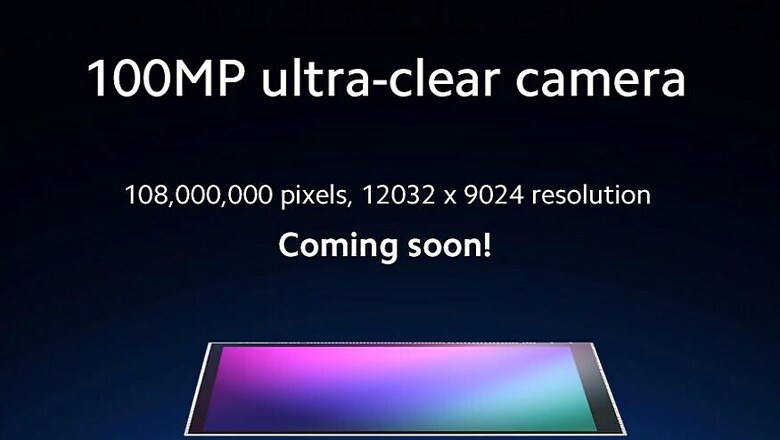
views
Xiaomi is set to launch a new smartphone with a 108-megapixel image sensor and five cameras in total, dubbed the Mi CC9 Pro. In what is a device that can be easily called a camera with phone call credentials, the Mi CC9 Pro is only the second device ever to use the new, Samsung Isocell Bright HMX image sensor, featuring 108 million effective pixels. Alongside breaking the 100-megapixel barrier, Xiaomi wants its users to believe that the Mi CC9 Pro's camera will be a big deal because of its sheer sensor size. The question, however, is whether it would really make a sizeable impact.
The Samsung Isocell Bright HMX is a 1/1.7-inch-type sensor, which makes it 1.3x larger than a conventional mobile image sensor. It stacks together 108 million pixels, which operate in pixel binned state of quad arrays. While Xiaomi's product manager recently posted an image showing the size difference between the new sensor and a "conventional" one, Xiaomi appears to be putting more emphasis into the sensor size itself, talking about the engineering barriers of using large sensors in a smartphone despite the space constraint in a slim body.
In terms of the technology, pixel binning will prevail with the Isocell Bright HMX, which implements a similar set of compression technologies and pixel breakdown the way every pixel binned sensor works. This will also have the same benefits in terms of file compression, where the additional pixels will help with processing additional data for each image and video, while the smaller pixel size means file sizes will not balloon up, either.
For consumers, the real deal here is not about the sensor size, but the benefits of having a denser chip to process the information. As a result, the 108-megapixel sensor does not just have implications in terms of its size. In general photography terms, a larger sensor equates to more space on the die, thereby giving a larger surface area of incident light for the diodes (i.e pixels) to absorb information from. As a result, the inherently larger sensor will have some positive impact in terms of the dynamic range and low light performance. However, the difference in sensor size is not large enough for the Isocell Bright HMX to have that big an impact in comparative terms.
A big reason for this is in understanding how a smartphone camera works. Computational photography, or the use of algorithms to simulate the prowess of mechanical elements and optics, will still play the biggest role in making use of the larger pixel volume. In essence, areas that this will impact include pixel readout in high frame rate videos, thereby enabling users to export videos from their phones with lesser compression standards. This would help in preserving more details in each frame, while also producing a greater extent of textures, shadows and colour shades. This has seemingly lesser to do with just the sensor size itself.
The size is not tantamount to the potential success of this sensor. Case in point is Huawei's new 40-megapixel 'Cine' sensor used in the Mate 30 Pro, which has a larger size — 1.5x of a conventional sensor. This makes it larger than the Isocell Bright HMX, which in turn justifies its 'Cine' credentials. Typically, uncompressed video recording and output requires a larger amount of information and buffer to function, which in the limited smartphone real estate bearings will have a bigger impact than Xiaomi's 108-megapixel sensor.
Nevertheless, it presents us with an interesting opportunity in the quest to improve smartphone photography. The real details of the Mi CC9 Pro's camera, along with the benefits of its sensor, should become more apparent once Xiaomi makes the device official on November 5.




















Comments
0 comment